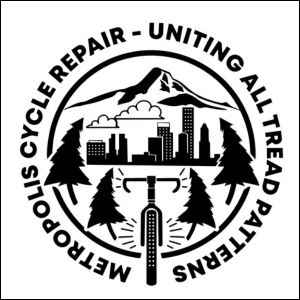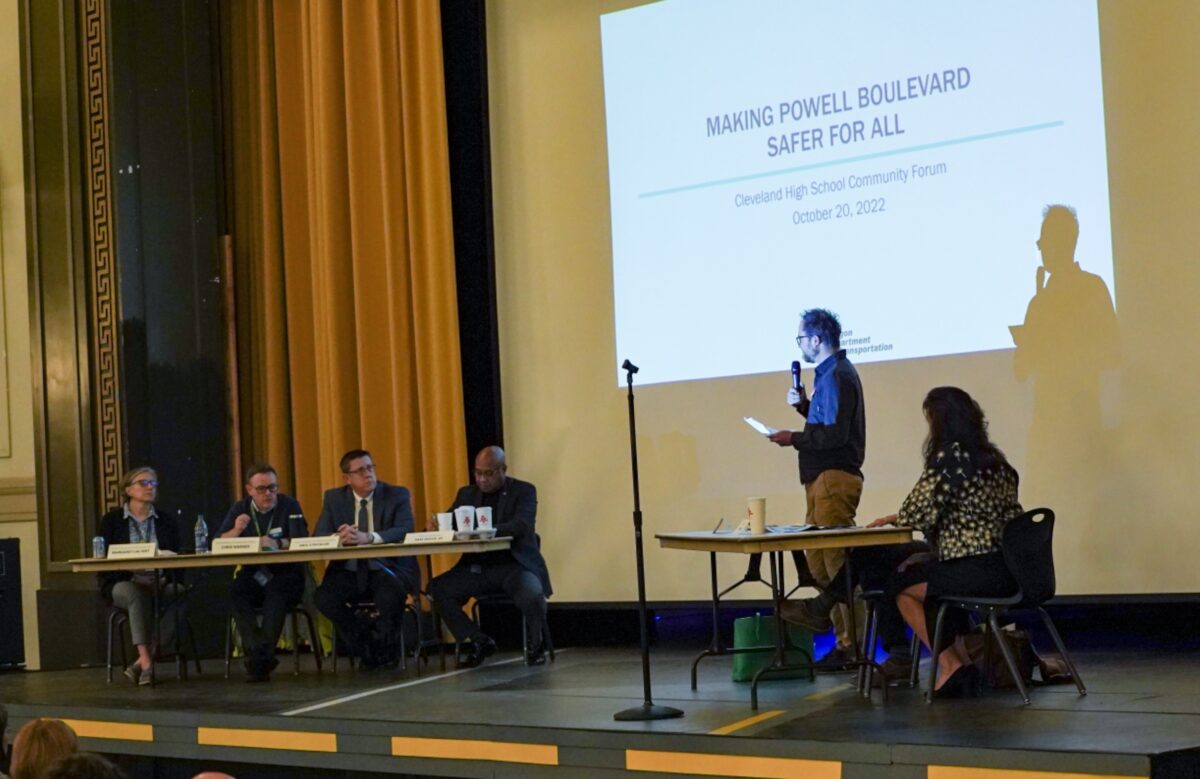
Well over 200 people who showed up for a community forum to discuss street safety issues at Cleveland High School Thursday night.
Just 16 days after Sarah Pliner was hit and killed while bicycling across SE Powell Boulevard and 26th Avenue, the leaders of the Oregon Department of Transportation, Portland Bureau of Transportation, TriMet and a raft elected officials and top agency staff endured a two-and-a-half hour event where everyone was able to speak their mind, air concerns, and have direct access to key decision makers.
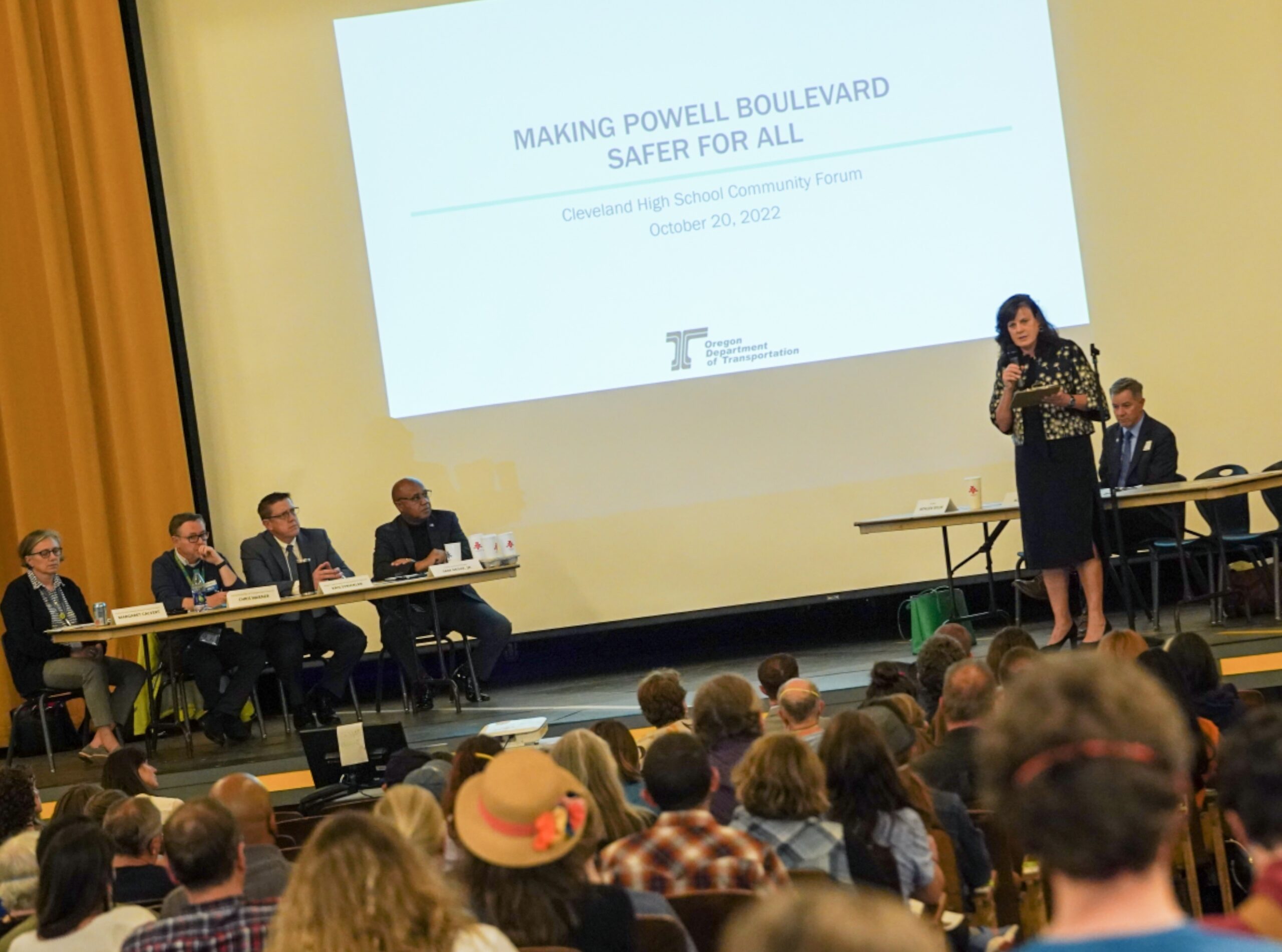
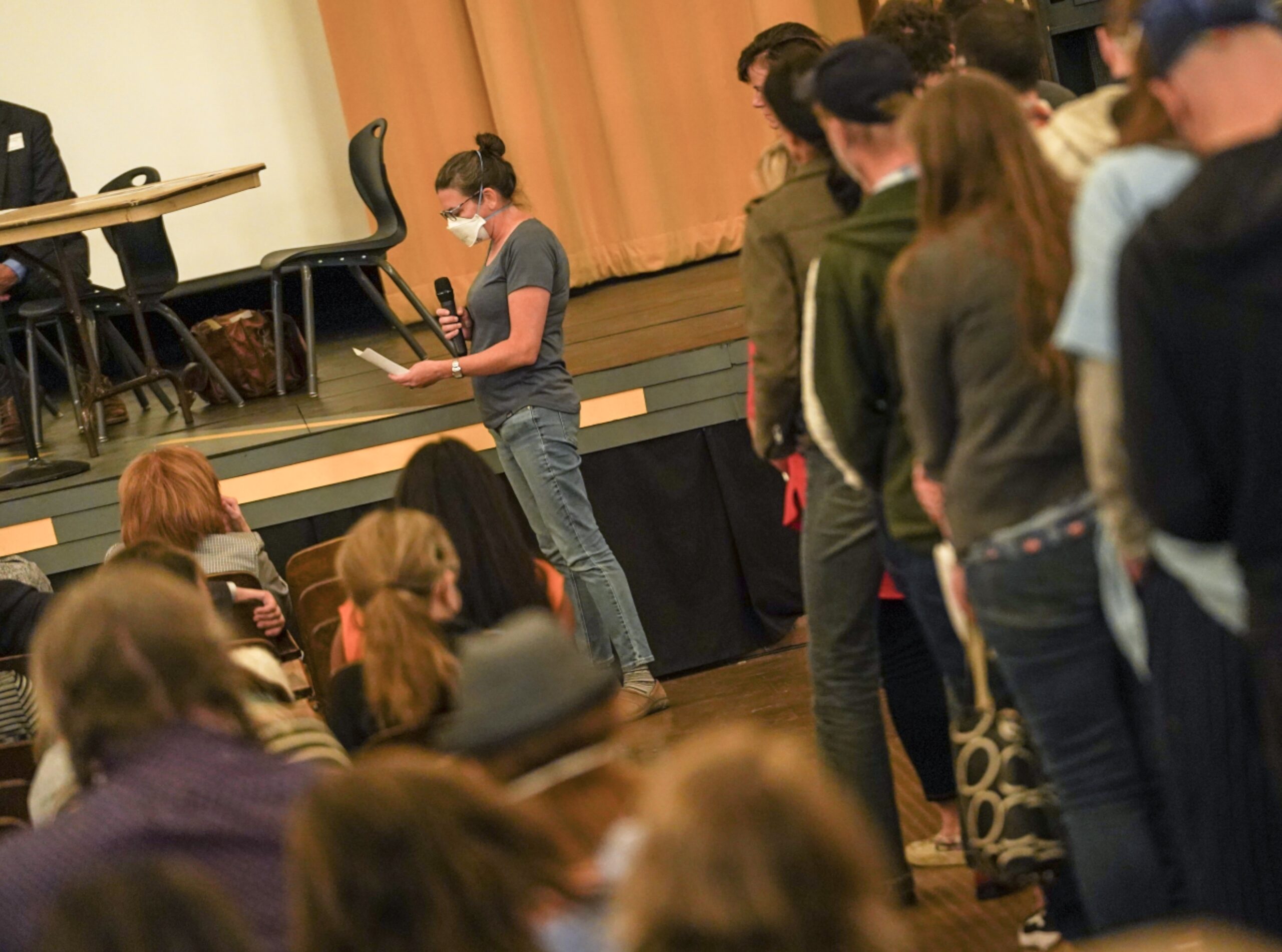
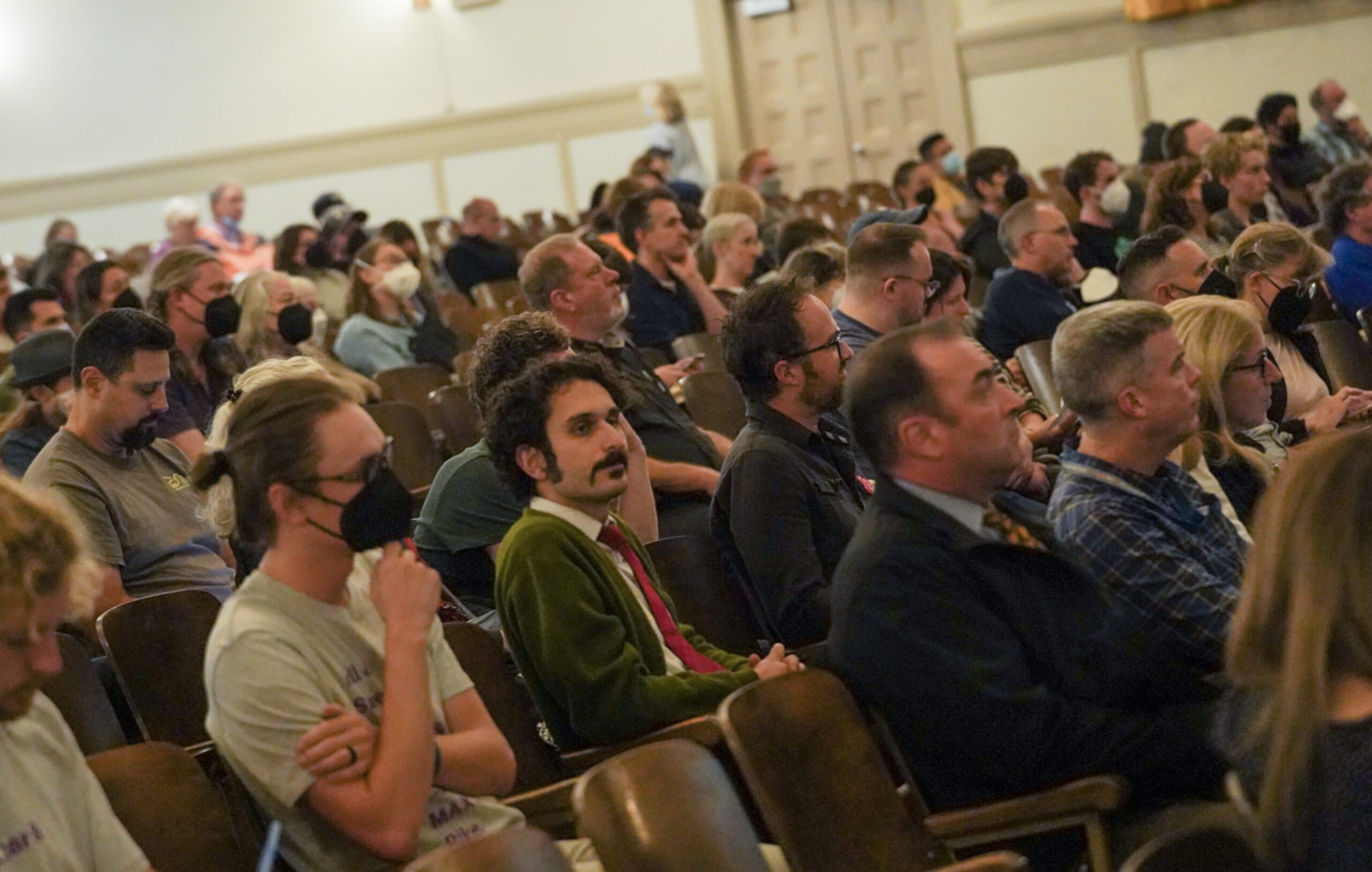

Oregon State Senator Kathleen Taylor, who represents the district and whose daughter is a senior at the school (she also had a son who graduated three years ago), hosted the event. The fact that she was able to pull such an impressive gathering together on short notice might have had something do with Oregon Governor Kate Brown. After holding a moment of silence for Sarah Pliner, Senator Taylor shared in her opening remarks that just days after the tragedy, she got a phone call from the Governor: “She said, ‘Senator Taylor, I’m here for you and I am here for southeast. Let me know whatever I can do to be helpful,'” Taylor recounted.
While it was nice of the Governor to engage on this high profile fatality, folks in the crowd were much more interested in the two people sitting on the stage: ODOT Director Kris Strickler and PBOT Director Chris Warner. As we’ve reported, it appears that so far these two and their respective staffs have been working closely together for the past two-plus weeks. Last night’s crowd was peppered with high-level staff from both agencies (many of them feverishly scribbling notes as people spoke), a sign that they are taking the community’s concerns about SE 26th and Powell seriously. (I also noticed that both agencies brought government affairs staffers along — PBOT Intergovernmental Resources and Policy Affairs Manager Shoshana Cohen and ODOT Government Relations Assistant Director Lindsay Baker. PBOT Commissioner Jo Ann Hardesty was also in attendance. She sat in the crowd and never sought the mic.)
The fact that leaders from PBOT and ODOT conspired just a few years ago on an intentional plan to make the intersection where Sarah Pliner died less safe for cycling, might have something to do with the actions, tone and urgency we see from them today.
Before he walked on stage, I asked Director Strickler why he’s been so willing to engage and respond to this incident. “We have so many needs in our state. Needs like this need to take priority,” he said. “We know we have incidents and we’re getting better addressing them, but it doesn’t mean we’re done. When you see things like this occur, we think we can do something more. It really is that simple.”
So far, that “something more” includes a lower speed limit and more paint striping in the intersection (more on planned changes below). I asked Strickler if he’s willing to consider a road diet on Powell. “One can say ‘reduce the lanes,’ and there’s a big part of me that’s all for reducing the lanes out here even [waving to Powell Blvd]. The problem with that is there are consequential outcomes associated with that for neighborhoods and other things so it’s not something we can do tomorrow morning. We need to have a conversation about what the impacts are. We don’t want to make it worse in other areas and create other safety issues.”
If Strickler needed to be refocused on the impacts and safety issues we face every single day on SE Powell and 26th because of those lanes, a powerful speech from Bike Loud PDX Chair Kiel Johnson likely did the trick. Sen. Taylor gave Johnson the mic to speak “for the bicycling community” before Strickler and Warner gave presentations about their project plans.
Johnson took full advantage of the moment. Standing just feet from Strickler and Warner, he said directly to them:
“Sarah Pliner’s death was not an accident. It was the result of a series of decisions transportation leaders have made. In 2018, we stood at that very intersection to protest the removal of the green painted bike boxes. We stood there because we knew those green bike boxes made us safer. Why would anybody remove those bike boxes?!
If you go up and down Powell, you’ll see no pedestrian crossing signs, as well as places where there used to be ‘No Crossing’ signs until drivers ran them over.
That’s the approach ODOT has taken on Powell for decades, as well as with there other urban highways — to design the roads only for the capacity and speed of private automobiles. And to manage safety for people outside of cars by telling them to go somewhere else.
Sarah paid the price for that approach. It doesn’t work.”
So. What are ODOT and PBOT going to do differently?
The plans
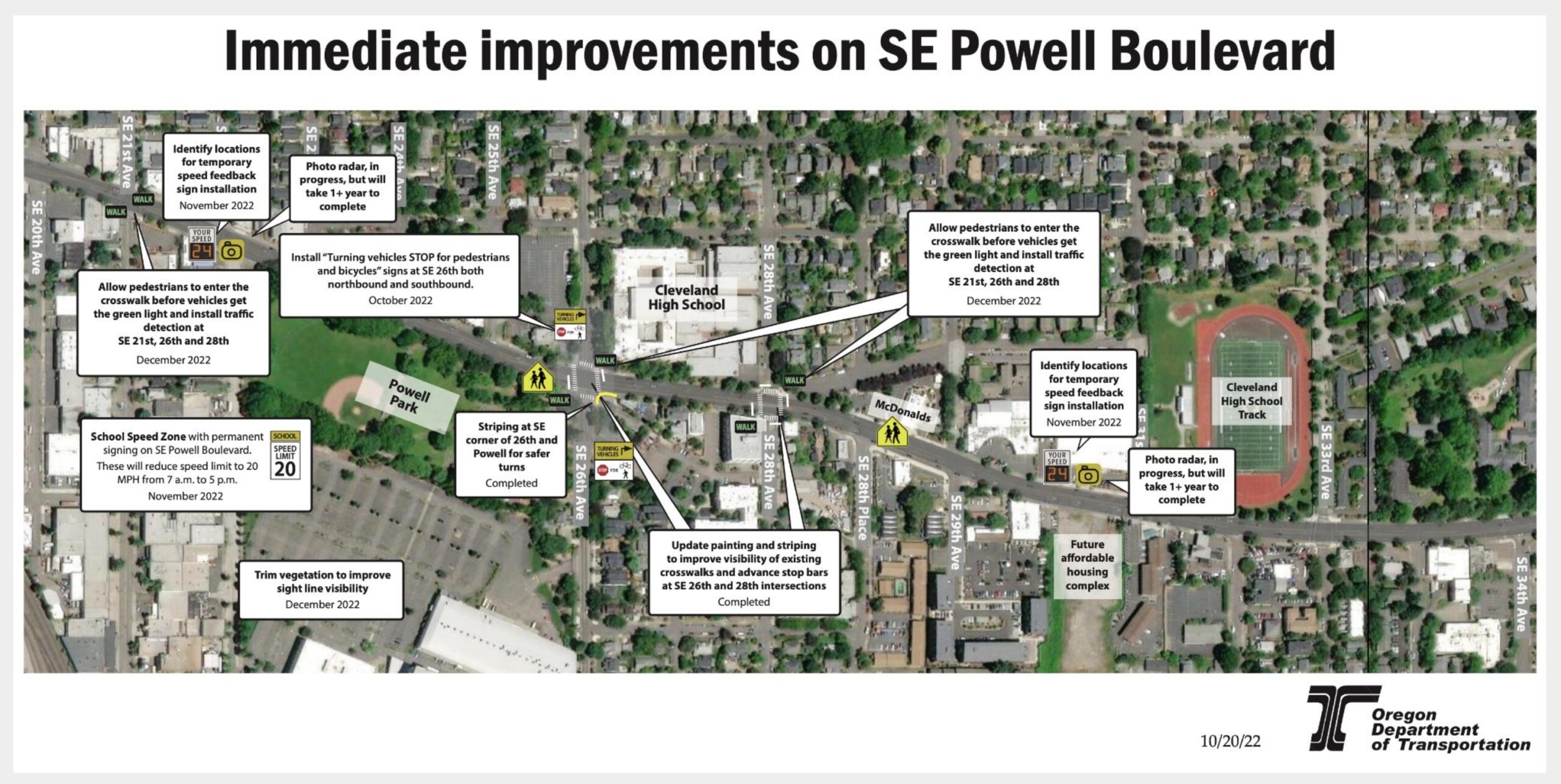

We reported some of that’s in store Thursday morning. Last night we heard a lot more.
The big news last night is that ODOT will follow PBOT and install a school speed zone on Powell Blvd. That’s a big deal since Powell is a state highway and the school zone will drop the existing 30 mph speed limit to 20 mph. The resolution created by PBOT Commissioner Jo Ann Hardesty and passed by council Wednesday called on ODOT to establish these school zones statewide wherever a school abuts a state highway. Strickler wasn’t ready to commit to that last night.
The other bit of news last night was that ODOT confirmed they will allow PBOT to install a leading pedestrian interval on the signal for northbound 26th Avenue at Powell. LPIs are proven safety measures that give crosswalk users a green several seconds before other road users.
Of course none of this matters without enforcement. To address that ODOT said they’ll install speed reader boards next month and they’ll follow-up with speed photo radar cameras on Powell east and west of 26th. But there’s a catch: Strickler said equipment delays mean they likely won’t deliver enforcement cameras for over a year. He said something about the pandemic playing a role, but it’s not clear why it takes so long (We’ll follow up on that to find out why.)
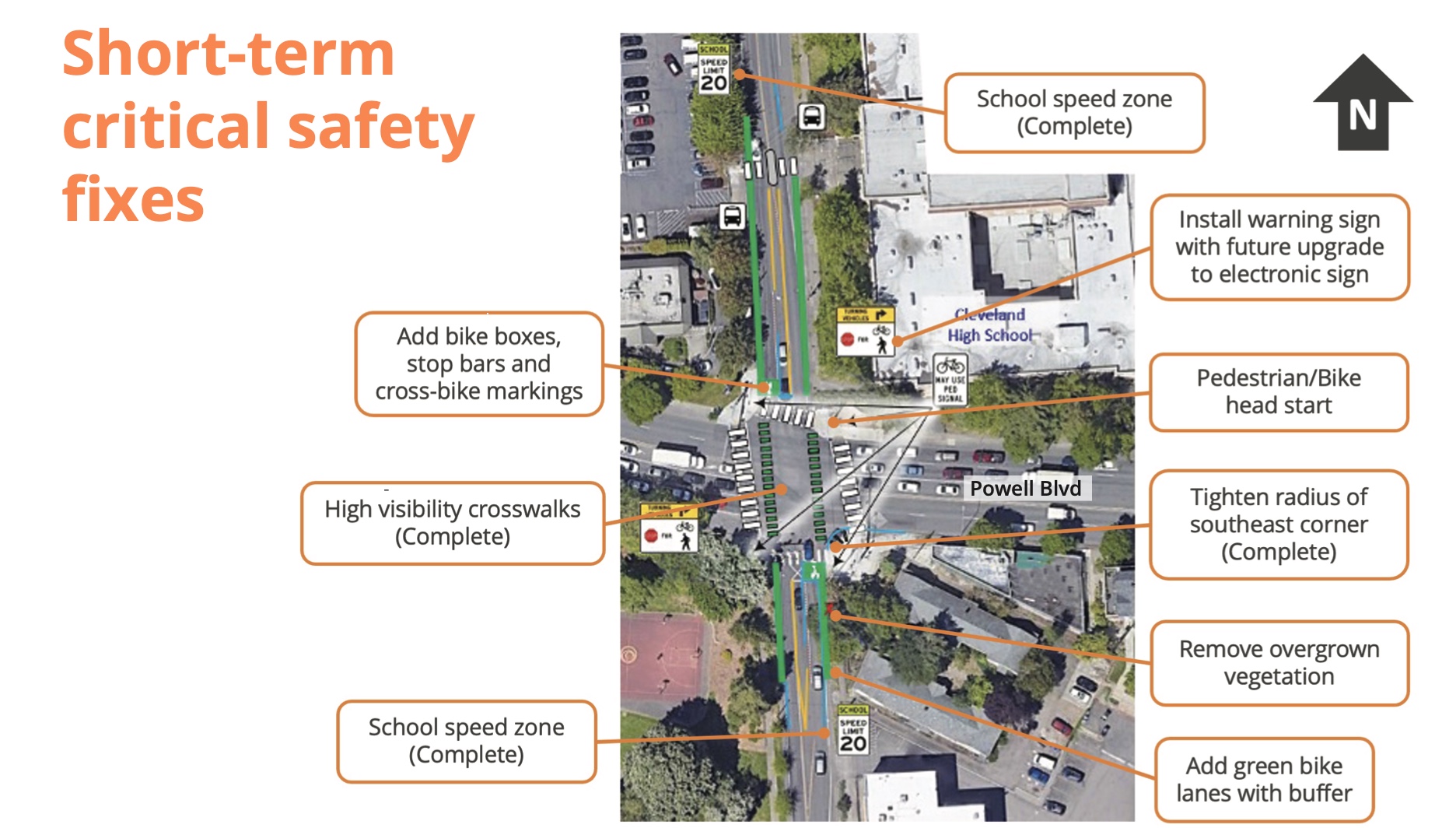
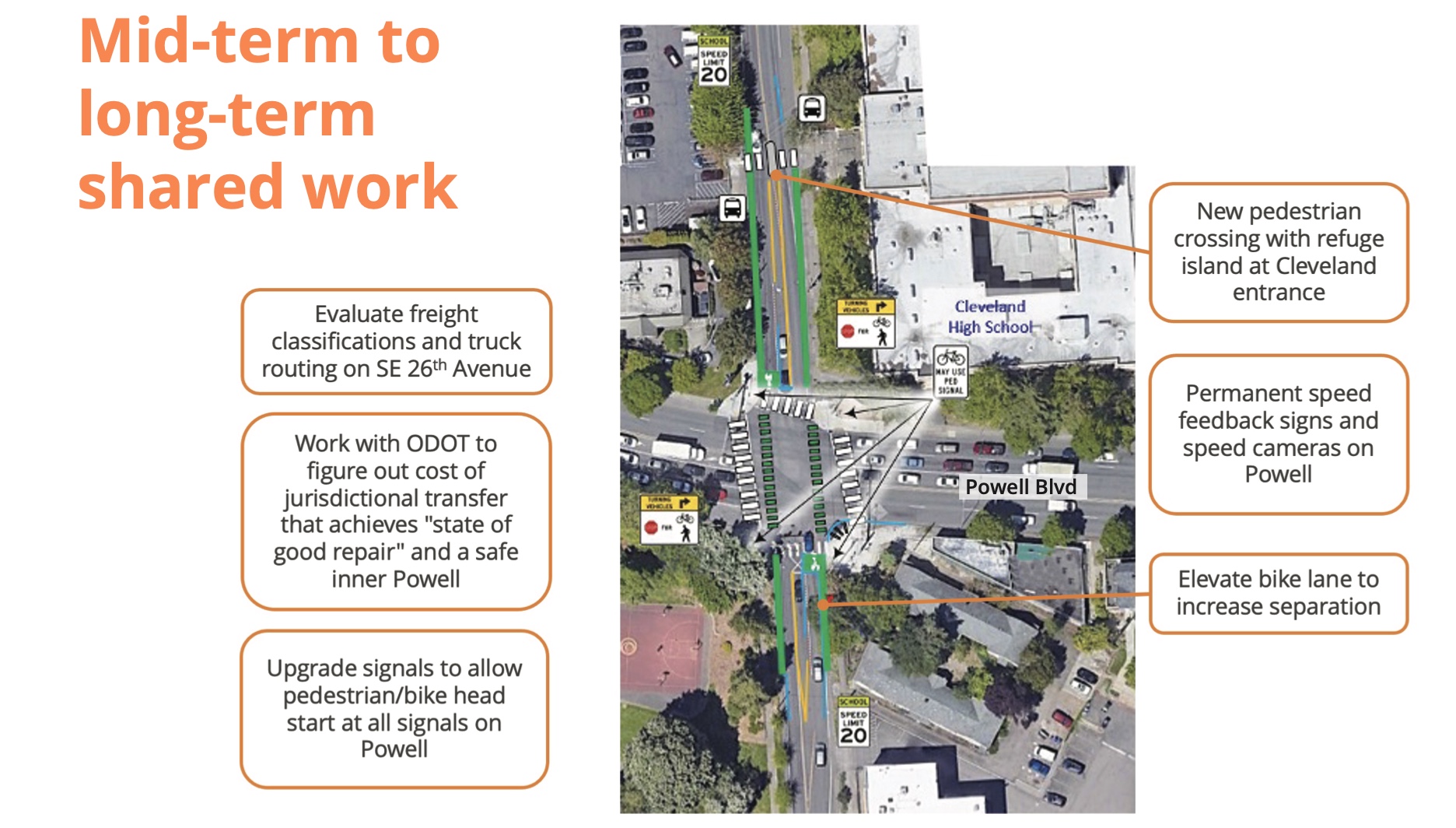
On the PBOT side of things, they plan to stripe green “cross-bike” markings in the intersection to help accentuate the green bike lanes and bike boxes they plan to reinstall soon. In the mid-to-long term, Director Warner said they’ll consider elevating the northbound bike lane, “to increase separation.”
TriMet is an active partner in all this too. General Manager Sam Desue, Jr. was on stage last night and he had a staffer present potential bus route changes aimed and reducing the amount of times students would need to cross Powell to get to school (below).
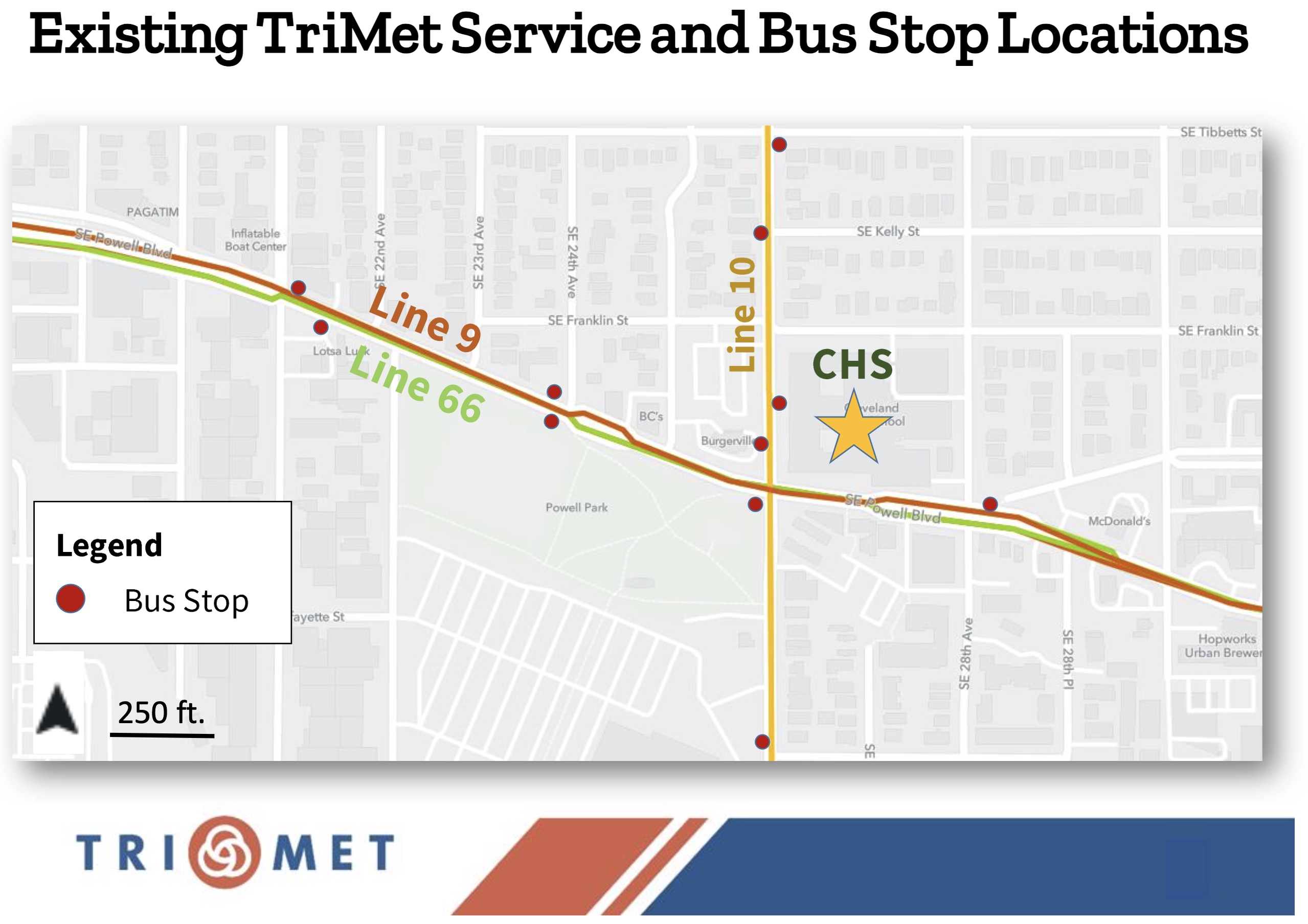
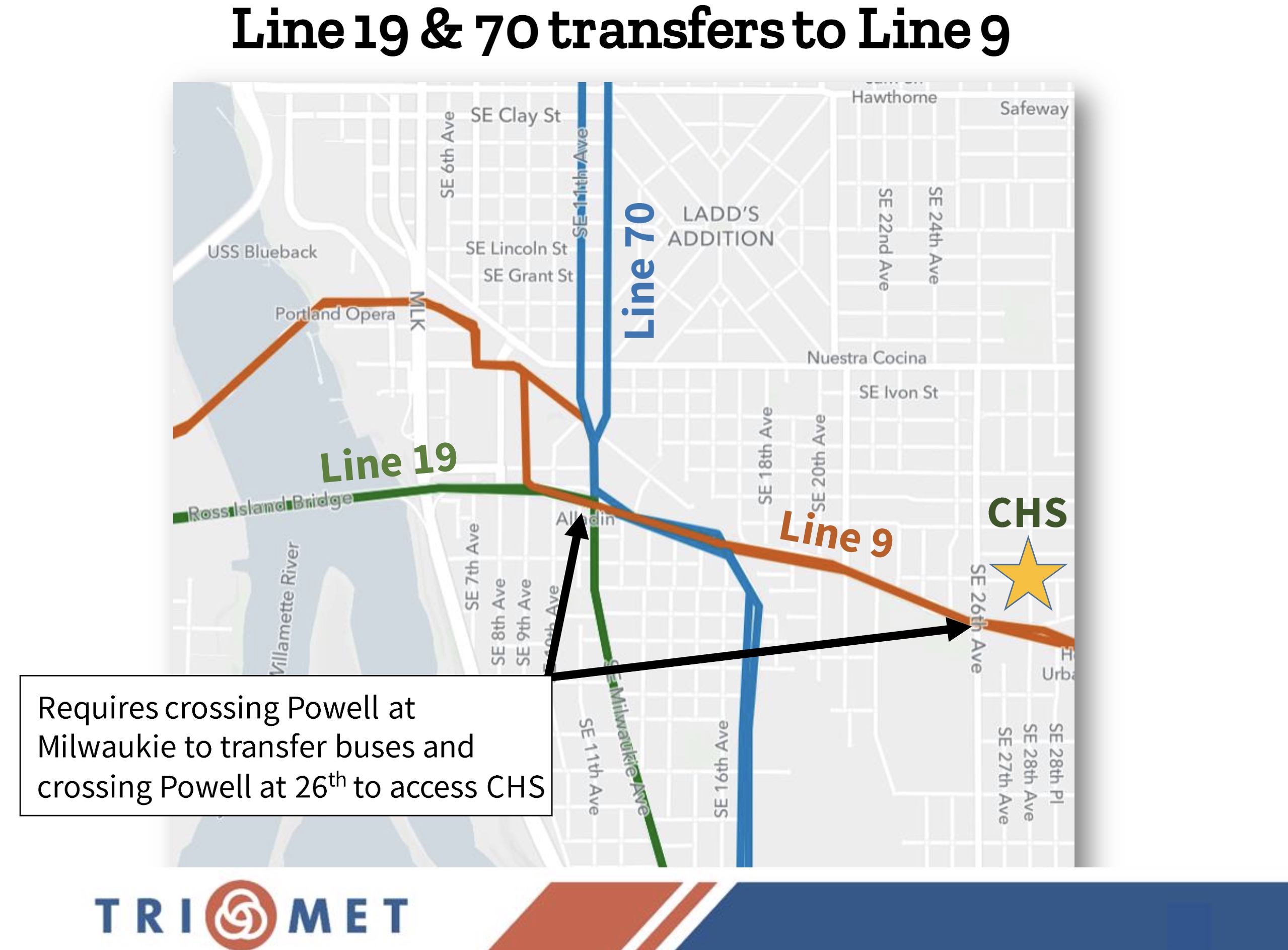

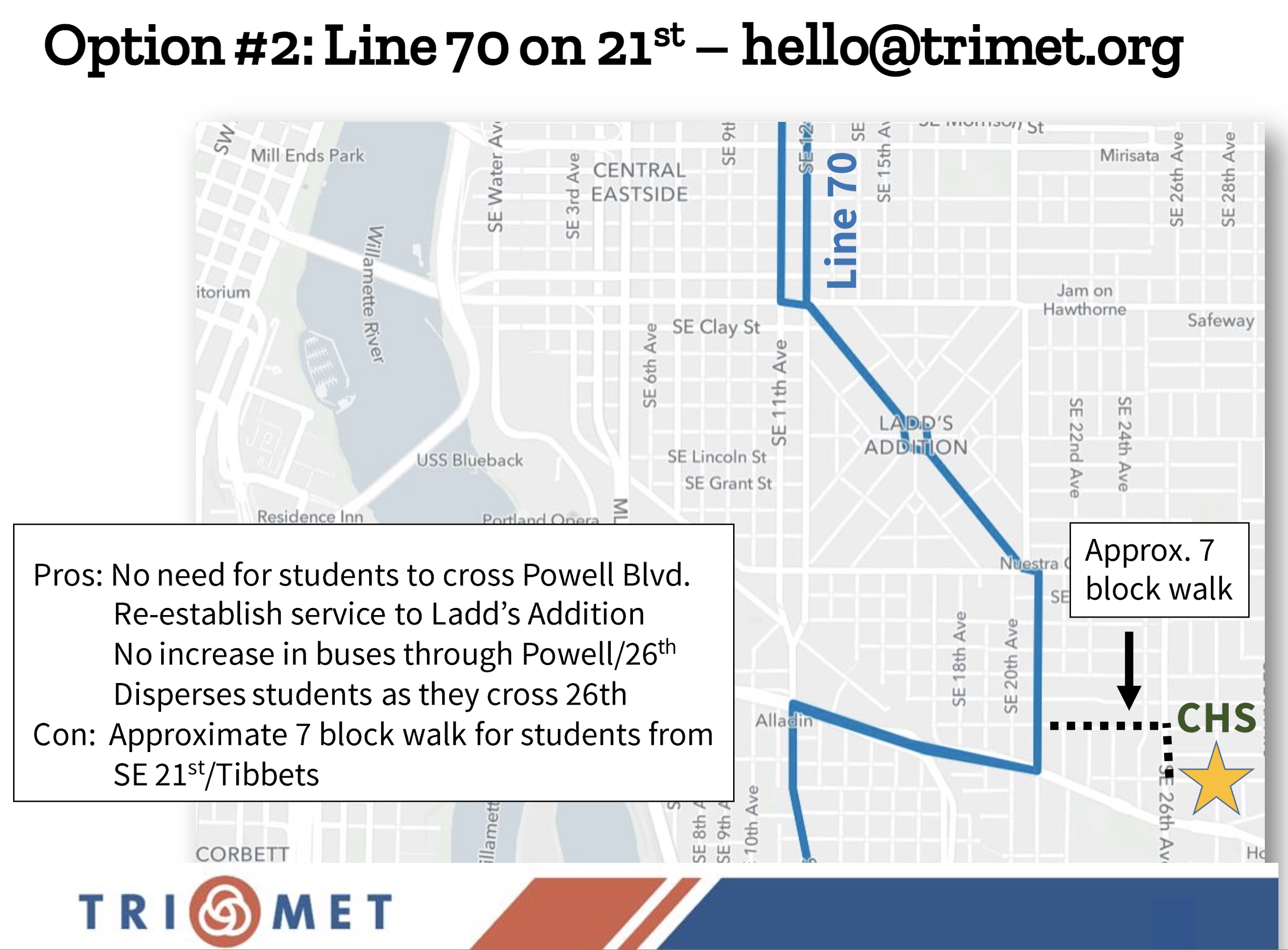
If the statements and plans from agencies aren’t enough to convince you folks are taking these issues seriously, how about the fact that Director Strickler said ODOT and PBOT have launched a task force to analyze not just Powell Blvd, but many other danger hot-spots throughout the region? There’s also a parent-teacher conference next week at Cleveland High where TriMet will flesh out their bus reroute ideas.
The Q & A


The second half of the event was all about the people who came to voice their concerns and pose questions. Dozens of people lined up and both ODOT Director Strickler and PBOT Director Warner got an earful.
The trauma felt by students, staff, and parents at Cleveland High was one of the most important things shared last night
A 14-year-old Cleveland student named Owl Brooke (who posted the poem pictured above at Sarah Pliner’s memorial) stunned many in the crowd. “I saw what happened. And it was just horrifying,” they said, gripping the mic tightly with both hands as they spoke. “And now there’s something that I have to go through in my life. And I’ve seen death. And some adults haven’t seen death. And it’s just, it’s just crazy. And I just wanted to say that like, something needs to change, something needs to happen here.”
A mom of a freshman at Cleveland named Susan stood up and described what happened right after Pliner was hit and her body was still in the road. Dozens of students where at Powell Park and had to walk across the intersection to get back to class. “A teacher held my daughter’s hand and guided her so she didn’t have to open her eyes again,” Susan said.
Kiel Johnson from Bike Loud asked Director Strickler about the possibility of a road diet on Powell. Strickler said reducing the number of lanes is something they “intend to analyze” in the upcoming weeks; but he also shared major caveats. “Now I will tell you the impacts of 40,000 vehicles that travel this facility,” he replied. “reducing the number of lanes and where they go, is something that we have to analyze very seriously, because the current street grid may not be able to handle it — and likely can’t — and so we have to analyze that with the city. But as I mentioned, all things are on the table. And we’ve asked our teams collectively to look at it with that in mind.”
Johnson also got Strickler to commit to adhering to ODOT’s Blueprint for Urban Design, a guidebook adopted in 2019 that requires engineers to use much more progressive facility designs that we usually see on state-owned roads.
Portlander Emily Guise wasn’t satisfied with Strickler’s answers on a potential Powell Blvd road diet. “I’ve heard a lot of talk about managing traffic, but I haven’t heard a lot of talk about how you will reduce traffic on Powell,” she said. “Just because there are 40,000 cars today doesn’t mean there needs to be 40,000 cars in the future.”
Next steps
These past few weeks have given us plenty of fodder for follow-up and have opened up important discussions about how to tame ODOT’s urban arterials. Coming so soon after the tragedies on 82nd Avenue last year, with traffic culture seeming to get worse with each passing day, and with a renewed sense of urgency for change, there is real possibility that this time we will see substantive shifts in how ODOT and PBOT approach these issues.
But with every passing day that Sarah’s death fades from the news cycle, so too might people’s interest in doing something to prevent the next one. I’ve seen it happen many times. And agencies know this. They know they won’t hear from people about any of this in a week or so. And that will tell them it’s OK to push this down their long list of “top priorities.”
If we want to change the streets, we have to change the system at its highest levels. We cannot let them forget Sarah Pliner. And Ashlee McGill. And Martin Crommie. And the dozens more dead people who’ve been sacrificed at the altar of automobility.
Last night, Portland activist Hami Ramani held up a piece of paper with the word “Love” typed on it. Then he yelled into the mic:
“When you’re out there walking, biking, taking transit, driving even — do you feel love on our streets? Is there love on our streets? It’s a simple question. I think it’s a resounding no. There is no love on the streets. I am so sick of the street-by-street. Are we really talking about bike boxes? Have you seen the pollution? We’re talking about bike boxes. So, do you feel love on the streets?”
Maybe “feel love on the streets” is a better goal than “vision zero.”
Stay tuned.






